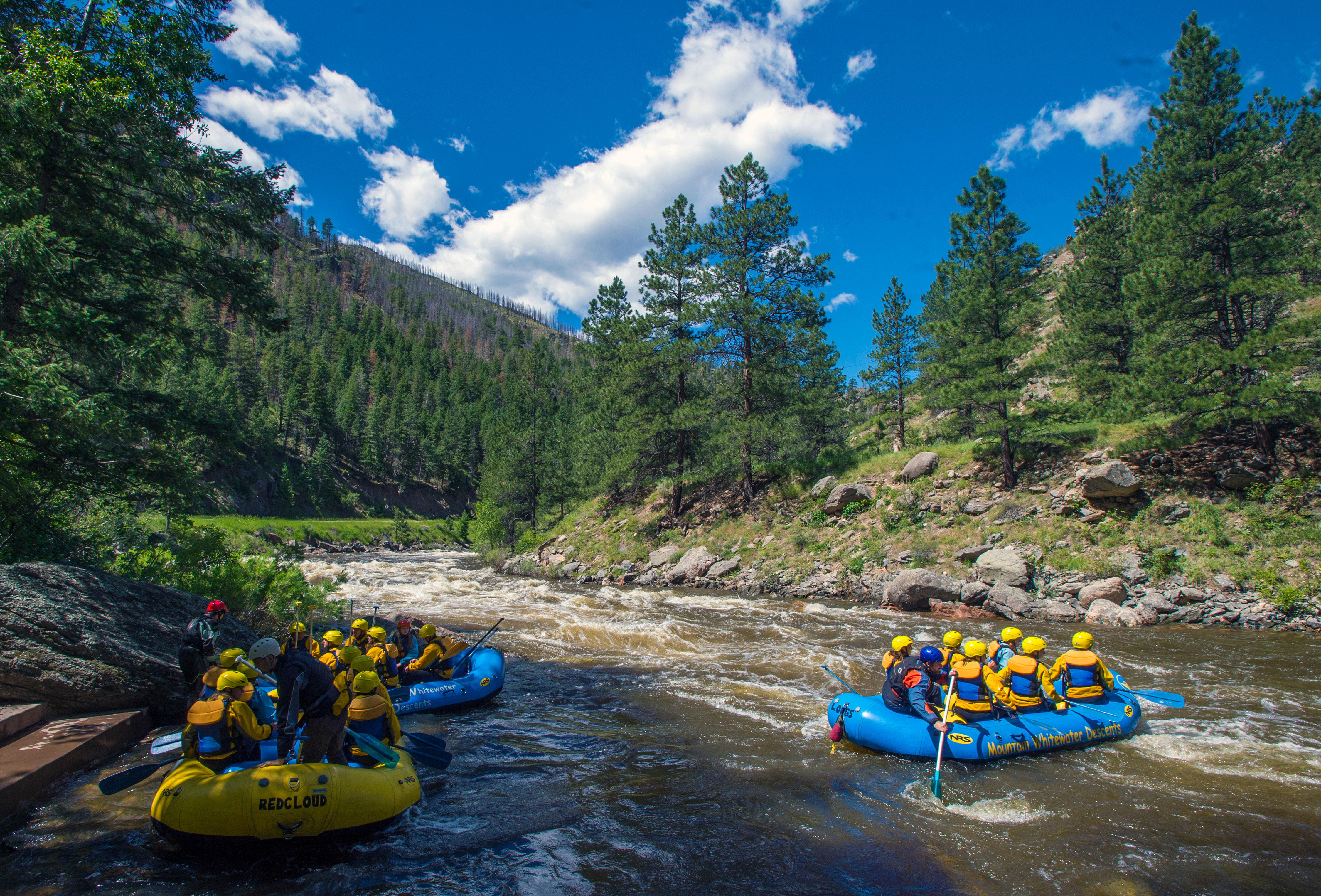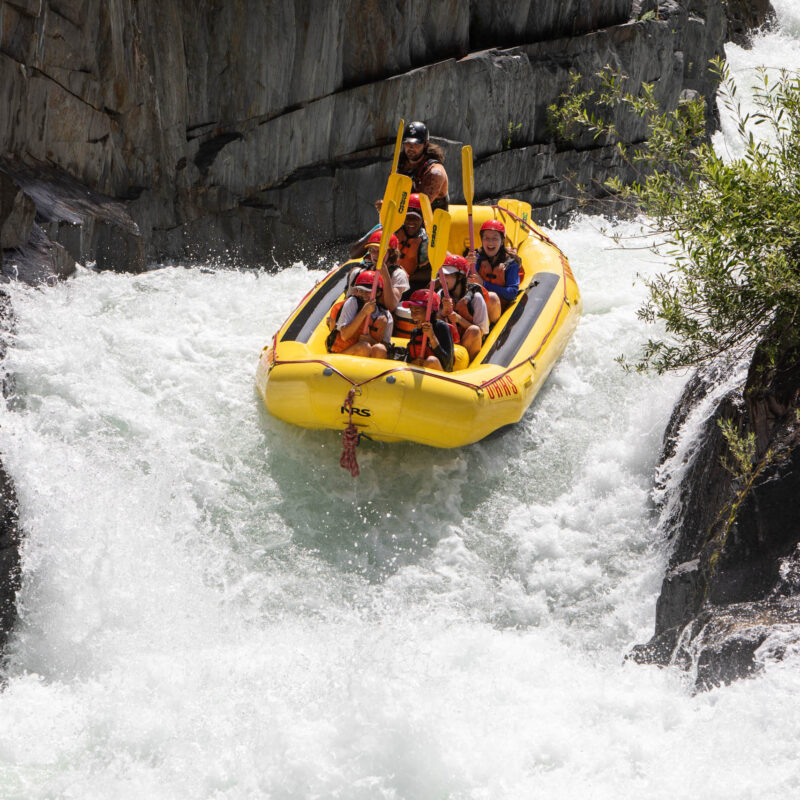Necessary Abilities for Water Rafting
Understanding the art of water rafting requires a mix of precise abilities and expertise to browse the unforeseeable currents of rivers, making it a thrilling yet potentially unsafe task. From recognizing the intricacies of river characteristics to swiftwater rescue techniques and seamless team communication, the trip down the river demands a blend of competence and flexibility. White Water Rafting Colorado.
Paddling Strategies
Mastering reliable paddling strategies is vital for browsing water plethoras securely and properly. Appropriate paddling not just thrusts the plethora onward but also assists in navigating and steering with differing water problems. One basic method is the forward stroke, where paddlers dip the blade totally right into the water and pull it back along with the raft to create propulsion. Timing and control are key to ensure that all paddlers remain in sync, maximizing the power of each stroke.
In addition to the forward stroke, the draw stroke is essential for making quick adjustments or pulling the plethora closer to an object. By placing the paddle blade vertical to the water's surface area and pulling the water towards the boating, paddlers can effectively transform the vessel's direction. The backstroke serves as a valuable device for backing up or reducing down the raft when needed.
River Checking Out
Efficient paddling techniques, such as the forward stroke and attract stroke, play a crucial duty in navigating and analyzing river currents, a skill called river analysis. River analysis involves the capability to assess the rate, deepness, and instructions of the water flow to make enlightened choices while browsing rapids. By understanding how the water moves obstacles and through various networks, rafters can select the finest route to safely go across the river.
One trick aspect of river reading is acknowledging various sorts of currents, consisting of eddies, waves, and hydraulics, and understanding just how they can influence the plethora. Eddies, for instance, are areas where the water moves in a round movement, typically providing opportunities for rest or tactical maneuvers. Waves can show the existence of rocks or challenges, needing fast adjustments in paddling strategy. Hydraulics, typically understood as "holes," are locations where water recirculates back upstream, posing possible risks to plethoras.
Grasping the skill of river reading is necessary for secure and pleasurable rafting experiences, enabling paddlers to browse tough waters with self-confidence and precision.

Swiftwater Rescue
Comprehending swiftwater rescue strategies is vital for water rafting lovers to react effectively in emergency situations on fast-flowing rivers. Swiftwater rescue involves a set of specialized abilities and knowledge targeted at safely drawing out individuals from swift-moving water. One key aspect of swiftwater rescue is acknowledging the risks present in fast-flowing rivers, such as filters, undercut rocks, and strong currents, to intend and implement successful rescue operations.
Proper equipment is necessary for swiftwater rescue, consisting of toss bags, rescue ropes, safety helmets, and individual flotation devices. Rafting enthusiasts must be proficient at using this tools in high-stress situations to guarantee the safety of themselves and others. Additionally, swiftwater rescue methods typically include team effort and control among rafters to perform complicated rescue maneuvers successfully.
Learning swiftwater rescue is extremely suggested for individuals involving in water rafting activities, as it outfits them with the required abilities visit this web-site to handle emergencies promptly and effectively. White Water Rafting Colorado. By comprehending and practicing swiftwater rescue techniques, water rafting lovers can enhance their safety and security which of their fellow rafters on tough river expeditions
Team Interaction
Efficient teamwork in water rafting relies heavily on smooth interaction amongst team members to ensure worked with and safe navigating through difficult river problems. Clear and succinct interaction is important for the success of any kind of rafting exploration. Team members need to have the ability to efficiently convey crucial details such as paddling commands, warning signals, and navigational directions.
In the busy and typically unpredictable environment of river rafting, precise and prompt interaction can imply the distinction between an effective run and a potential catastrophe - White Water Rafting Colorado. Each staff member plays an important role in the total communication process, whether it be listening diligently to the overview's directions, passing on details to other paddlers, or signaling for aid when needed
Establishing a common language and communication system before hitting the water is vital. This makes certain that everybody is on the very same page and understands just how to connect properly during the rafting journey. By fostering a society of open interaction and common regard, rafting teams can improve their efficiency and safety on the river.

Safety Procedures
In the context of water rafting, the foundation of team interaction developed throughout expeditions click is more reinforced with rigorous adherence to safety and security protocols. Safety methods are vital in ensuring the wellness of both rafters and guides throughout water rafting tours.
One more trick safety and security method is the comprehensive instruction supplied by overviews prior to getting started on a rafting journey. By purely sticking to these safety protocols, water rafting adventures can be both awesome and risk-free for all individuals involved.
Final Thought
Finally, understanding crucial abilities for water rafting is essential for a satisfying and secure experience on the river. Paddling strategies, river reading, swiftwater rescue, group communication, and safety and security procedures are all important elements that contribute to a successful rafting journey. By sharpening these skills, rafters can browse challenging waters with self-confidence and guarantee the safety and security of themselves and their employee.
Grasping the art of water rafting requires a mix of precise skills and expertise to navigate the unforeseeable currents of rivers, making it a thrilling yet possibly harmful activity. By positioning the paddle blade vertical to the water's surface area and pulling the water in the direction of the raft, paddlers can successfully change the vessel's direction.Understanding swiftwater rescue techniques is crucial for water rafting lovers to react efficiently in emergency circumstances on fast-flowing rivers.Effective synergy in water rafting depends heavily on seamless communication amongst team participants to ensure coordinated and risk-free navigation via tough river problems.In conclusion, grasping essential abilities for water rafting is important for a delightful and risk-free view website experience on the river.